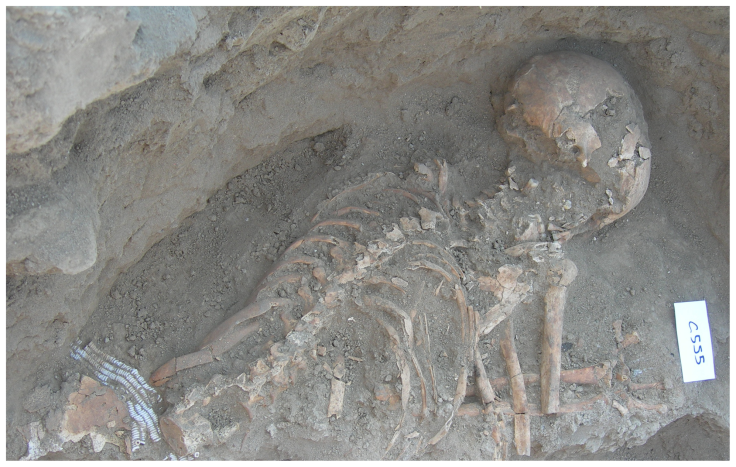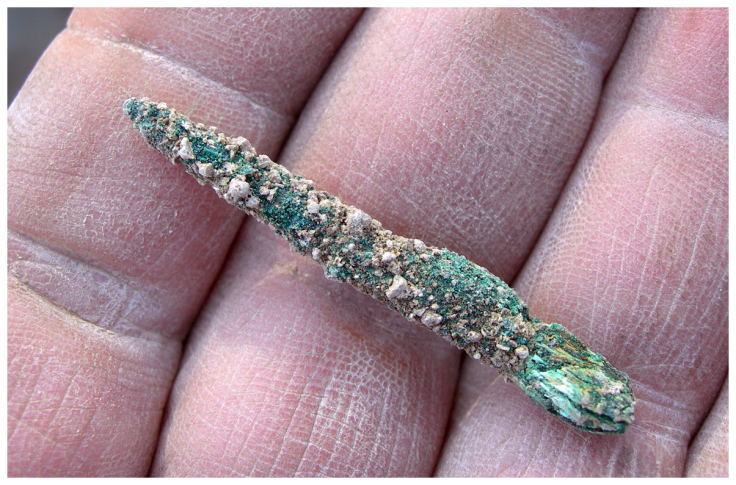Oldest Metal Object Ever Found In A Woman’s Grave In Israel

An antique copper awl, recently discovered in Israel, is claimed to be the oldest metal object ever found in the Middle East. The discovery suggests that ancient people in the region started using metals more than 6,000 years ago, several hundred years earlier than previously thought, according to researchers.
The archaeologists unearthed the metal from a Middle Chalcolithic burial site at Tel Tsaf, Jordan Valley in Israel. The area was a village dated to about 5100 B.C. to 4600 B.C., and was discovered in the 1950s with first excavations taking place at the end of the 1970s. Since the earliest digs nearly 40 years ago, the area has been supplying researchers with a great deal of valuable data about the ancient community that lived in the region. But, according to researchers, the most important finding to date is the copper awl.
“This paper examines the chemical composition of this item and reviews its context,” the researchers said in a study, published in the journal PLOS One. “The results indicate that it was exported from a distant source, probably in the Caucasus, and that the location where it was found is indicative of the social status of the buried individual.”
The cone-shaped awl was discovered in a sealed grave of a woman, who was about 40 years old when she died. The woman had a belt around her waist, which was made of 1,668 ostrich-egg shell beads. The grave was covered with several large stones and was located within a silo, suggesting that both the woman and the silo were considered special by the community.

The copper awl, which was set in a wooden handle, was about 1.6 inches (4.1 centimeters) long, about 0.2 inches (5 millimeters) wide at its base and only 0.03 inches (1 millimeter) wide at its tip. The researchers believe that the metal was a burial offering and belonged to the woman as it was found just above the skeleton.
“The appearance of the item in a woman’s grave, which represents one of the most elaborate burials we’ve seen in our region from that era, testifies to both the importance of the awl and the importance of the woman, and it’s possible that we are seeing here the first indications of social hierarchy and complexity,” Danny Rosenberg, an archaeologist at the University of Haifa in Israel and the study’s co-author, said in a statement.
As part of the study, the researchers also performed a chemical examination of the metal and revealed that it probably came from the Caucasus region, nearly 620 miles (1,000 kilometers) from Tel Tsaf. While the findings suggest that people in the area originally imported such metal artifacts, the researchers are yet to determine the actual use of the awl.
“However, in this area far more is unknown than is known, and although the discovery of the awl at Tel Tsaf constitutes evidence of a peak of technological development among the peoples of the region and is a discovery of global importance, there’s a lot of progress still to be made and many parts of the wider picture are still unknown to us,” Rosenberg said.
© Copyright IBTimes 2024. All rights reserved.






















